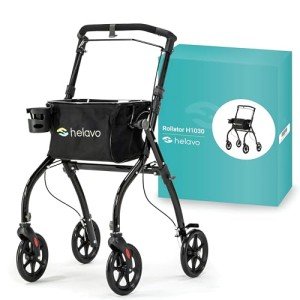Understanding Mobility Assistance: A Comprehensive Guide
In a progressively active world, mobility assistance has become essential for many individuals. Whether due to age, injury, or persistent illness, mobility difficulties can significantly impact everyday life. This article explores the various types of mobility assistance, their benefits, and practical factors to consider for those seeking help.
What is Mobility Assistance?
Mobility assistance includes a range of services, gadgets, and adjustments created to assist people move safely and efficiently. It intends to boost independence for those with difficulties in motion, enabling them to perform daily activities and connect with their environments.
Types of Mobility Assistance Devices
Mobility assistance gadgets can vary extensively, from basic to complicated aids. The following table describes some common kinds of mobility assistance gadgets, their descriptions, and ideal usages:
| Type of Device | Description | Appropriate For |
|---|---|---|
| Wheelchairs | Wheeled mobility gadgets for people with restricted walking capability. | Irreversible or momentary mobility needs. |
| Walkers | Frames with four legs, providing support while walking. | Individuals needing a stable aid. |
| Canes | Lightweight sticks providing support; consists of standard and quad walking sticks. | Those with mild mobility issues. |
| Crutches | Devices developed to move weight off the legs. | Post-surgery recovery or injuries. |
| Mobility Scooters | Motorized cars offering transport over brief ranges. | Those with mobility impairments. |
| Stairlifts | Motorized chairs that move up and down stairs. | Multilevel homes with stair ease of access problems. |
| Home Modifications | Structural changes, such as ramps or wider doorways. | Enhancing home accessibility for wheelchairs or walkers. |
| Transfer Aids | Gadgets like moving boards or lift systems for much easier transfers. | Assistance in relocating to and from chairs or beds. |
Advantages of Mobility Assistance
The value of mobility assistance extends beyond physical movement. Here are several crucial advantages:
- Enhanced Independence: Mobility gadgets empower users to carry out daily jobs independently, fostering self-sufficiency.
- Enhanced Quality of Life: By enabling greater involvement in social activities, mobility assistance adds to emotional well-being and social integration.
- Security and Support: Devices like walkers and walking canes provide physical support, reducing the threat of falls and injuries.
- Access to Healthcare: Mobility assistance can simplify transportation to medical consultations, guaranteeing users receive essential care.
- Customization Options: Many mobility gadgets can be tailored to match individual requirements and choices, ensuring comfort and functionality.
Common Mobility Assistance Challenges
While mobility assistance can pave the way for higher self-reliance and enhanced quality of life, different obstacles might arise. Some of the typical problems consist of:
- Cost: Mobility devices can be expensive, and insurance coverage might vary substantially.
- Training and Familiarization: Learning to utilize brand-new devices effectively might need time and assistance.
- Ease of access Issues: Not all environments are equipped to accommodate mobility devices, causing prospective barriers.
- Stigma: Social preconception around making use of mobility aids can impact self-confidence for some people.
Providing and Receiving Mobility Assistance
To guarantee the most effective assistance, it is essential for both providers and receivers of mobility aid to think about a number of aspects:
- Assessment of Needs: A thorough assessment by a health care specialist can figure out the specific kind of assistance required.
- Trial Period: Trying out devices can help individuals discover the one most fit to their lifestyle and preferences.
- Regular Maintenance: Maintenance of mobility gadgets ensures sturdiness and safety.
- Education: Providing training on the appropriate usage of mobility help is essential for optimizing advantages.
Mobility Assistance FAQs
Q1: What kinds of mobility help are offered?A: Common mobility help include wheelchairs, walkers, walking canes, crutches, and scooters, to name a few. Each gadget is developed to fulfill specific requirements and preferences.
Q2: Where can I get mobility assistance devices?A: Mobility devices can be gotten from medical supply shops, online merchants, or through doctor recommendations.
Q3: Will my insurance cover mobility assistance gadgets?A: Many insurance coverage strategies provide partial coverage for mobility help, but protection can differ based on the policy. Transport Walker 's suggested to talk to the insurance business for particular information.
Q4: How can I adjust my home for mobility assistance?A: Home adjustments like ramp setup, larger doorframes, and get bars in restrooms can greatly improve ease of access. Consulting with an occupational therapist can provide customized solutions.
Q5: How do I pick the ideal mobility aid for me or a liked one?A: Assess the person's mobility needs, weight capability, and way of life. Trying various gadgets can likewise assist in choosing the one that feels most comfortable and functional.
Mobility assistance plays a crucial role in enhancing the self-reliance, security, and lifestyle for people dealing with mobility challenges. From basic canes to complex mobility scooters and home adjustments, a variety of choices exist to satisfy unique requirements. As society continues to recognize the importance of availability, the combination of mobility assistance solutions into daily life will enhance, making sure that everybody has the chance to lead a satisfying and active lifestyle.
By comprehending the available choices and benefits, individuals and their families can make educated choices that support their mobility needs.

